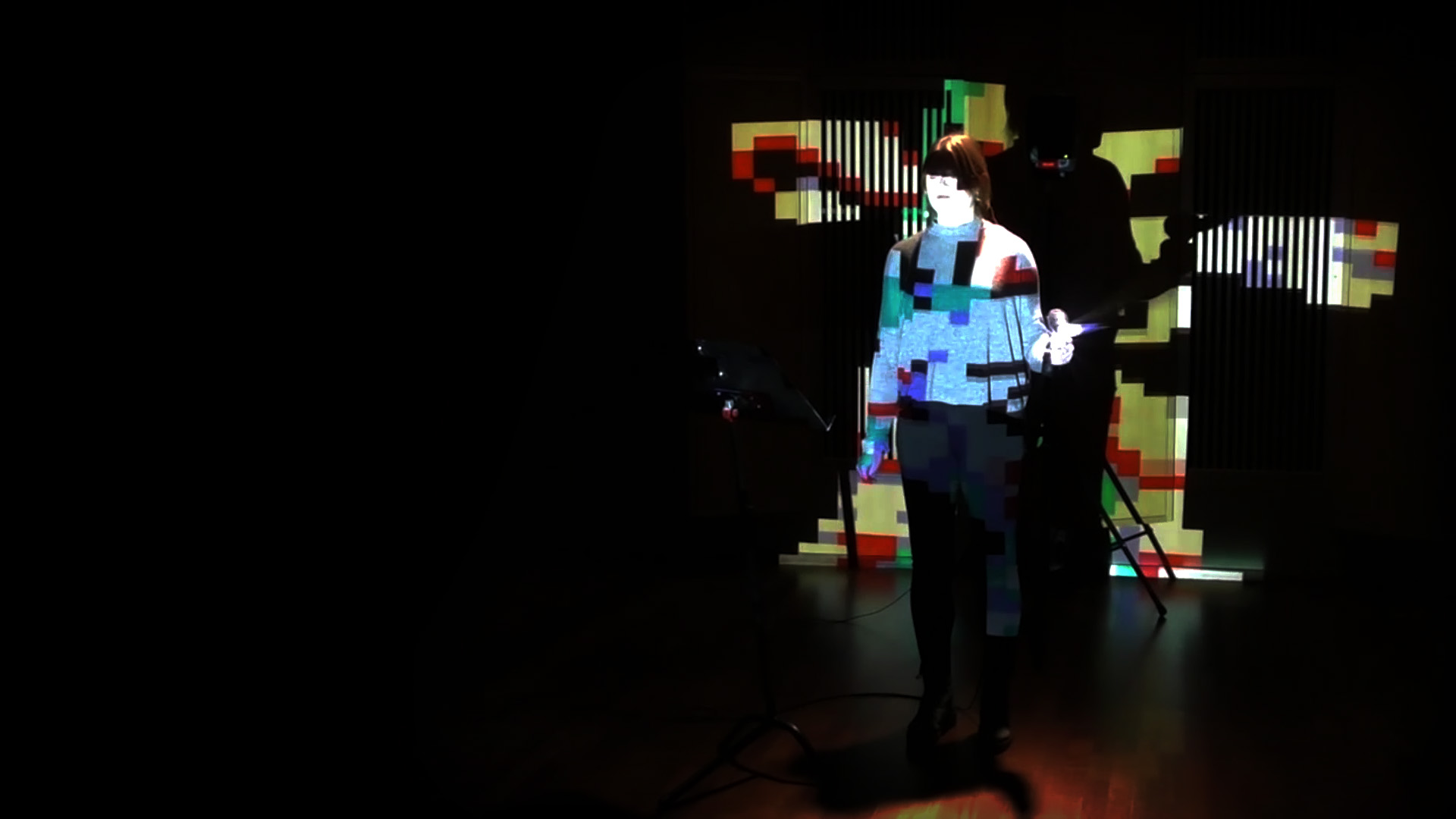

WORKS
2017-2023
No Title (No Filter) is a series of pieces for a vocalist, electronics and video, exploring the rendering and commodification of the voice and body in popular media, as well as the distortions of self-expectation arising from both non-realtime editing and instant, automated processing (“filtering”) of performance and image.
The pieces’ music video is featured as a holographic haunting of the live performance, and acts as a definitive reference which the performer must reenact and be held in comparison to, despite their bodily limitations and the inhumanly enhanced nature of their digitally produced likeness.
ALIASING is a continuously transforming body of work, which has so far taken the form of an installation, an interactive web-app and a digital archive of audiovisual works and texts, revolving around the themes of technologically mediated human relationships, and the continuous re-rendering of reality that makes up the texture of life on the internet today.
The project sets out to reflect upon the nature of digital media, and the collective imaginings surrounding them. The title is a kind of double entendre over the phenomenon called ‘aliasing’ in digital media and signal processing, and the word ‘alias’. The work expands on this in a poetics of the mirroring and endless reproduction of the individual as represented over the internet.
"Aliasing" in signal processing and related disciplines is a phenomenon that occurs as a result of a discrepancy between the recording or displaying medium and the represented signal or image - for example, that the retrieval of information is too slow in relation to the speed of what is to be captured, which causes us to hear information that is not there, or that we see waves in a fine-meshed pattern that is in fact completely straight. We often strive to erase these artefacts, even though they reveal a lot about the medium in which they live.
The project takes this as a departure point into questions on the human relationship to representation in the broadest sense, and the representation of the "self" and the very thoughts of a person in the face of the collective (and not least the individual's own parallel representations - aliases).
Furthermore, the project explores aliasing conceptually as a discrepancy between what is perceived, and the means by which it is perceived – revealing not only insights about the medium in which these artefacts appear, but also about the senses, about communication and cognition – what it means to wrap a thought in words, as much as to capture a variably oscillating light source through the fixed frame rate of a camera.
The saxophone and various cultural conceptions and technical representations thereof are conceived of within the piece as raw materials for their own contained substance, in an attempt to draw attention to the particular gaze which an instrumental performance presupposes from the audience. Emphasis is put on the background, the non-agent - that which usually serves as the scaffolding or container for the materials they present.The musical role of the saxophone is thus diminutive, in favour of various samples and a saxophone VST, and musical agency is given to the stage effects, which simultaneously serve to excessively "display" the performer, and to act as a (musical) voice of their own.The text is spoken by a vocal synthesiser that’s been convolved with a saxophone synthesiser, and was written by generating fan mail, curating and supplementing the results into a "letter", addressed from the VST saxophone to the physical one.
The piece was written for Mats Kirkebø during my first year at the Norwegian Academy of Music, and has subsequently been performed by Josh Spear at Ultima Oslo. It features a stereo track, live processing of the saxophone as well as a sequence for DMX-controlled light fixtures.
C3LL046F*CK710N
c31104bf*ck710n is a trio for differing instances of cellos: electronic sensors serving as a physical simulation and abstraction of the instrument, a classical acoustic cello with amplification and digital alterations, and an electric cello as a middle ground.This piece was composed by myself, Astrid Solberg, and Elias Nurmi Schomers, who also initially performed the piece with me as a trio. The process has consisted of a near-flat hierarchy and an attemptedly even distribution of responsibilities in composing and developing material for the cello, electric cello, and microcontroller/signal processing. Technical design was done by myself, in constant dialogue with the other composers, and included a self-made instrument based on the arduino platform, with distance and rotation sensors, designed to provide parametric control of audio through cello-like gestures.
SKARVAR | work for six voices (2022)
SKARVAR is an exploration of thresholds - the passagio of an individual voice, and the joints connecting individuals and individual actions in a group.
Swedish: skarv (noun) ~en ~ar
1 : seam, joint, connec on
2 colloquial : passagio (trans on between vocal registers)
3 : a bird species (unrelated to the piece)
cross section approx. 1:250 | work for ensemble (2018)
Compound Action, Repose | work for choir and vocal octet (2017)
Senescens | work for ensemble (2017)
This page is under development. Click here for a complete list of works